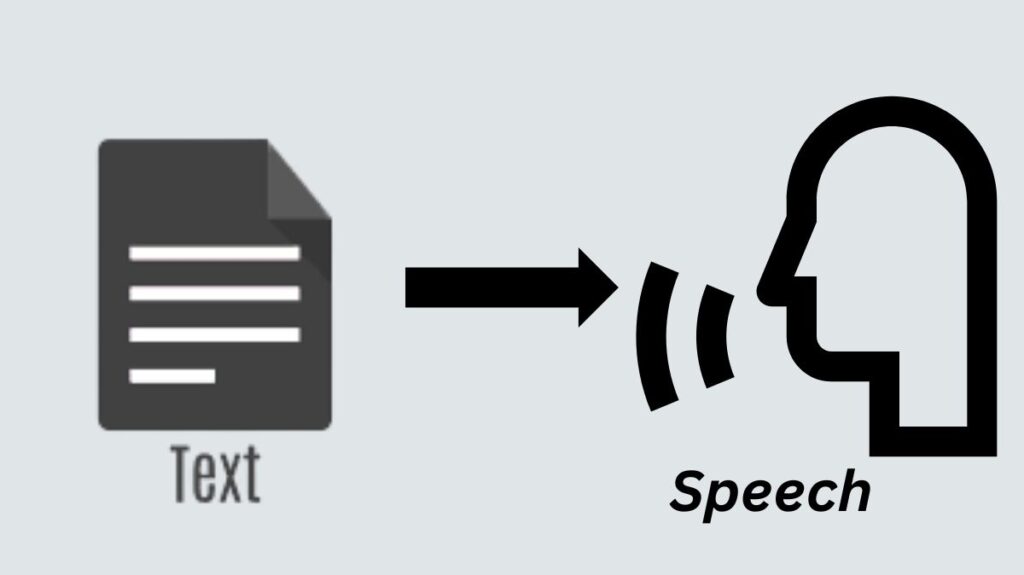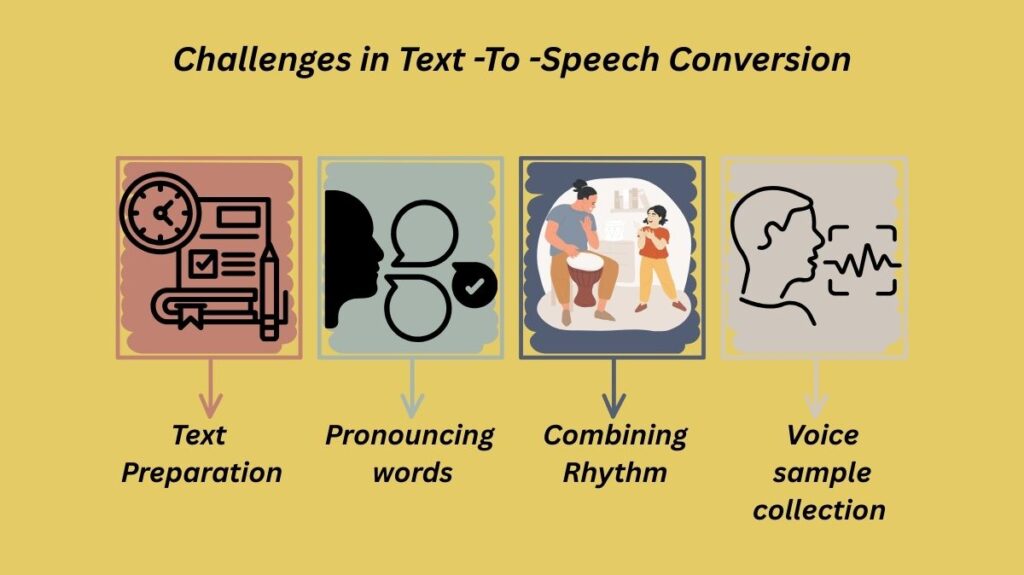An Introduction To Text to Speech Synthesis

Digital text is read aloud by text-to-speech (TTS), a form of assistive technology. One term for it is “read aloud” technology. When words are on a computer or other digital device, TTS can turn them into audio with a button click or finger touch. For kids who have trouble reading, TTS is incredibly beneficial. However, it can also help kids focus and write and edit better.
Text-to-Speech (TTS) technology now aims to make machines sound like people of various ages and genders, rather than just having them talk. From a perspective of communication with assistants, It will be able to listen to machine-voiced audiobooks and news on television without recognising the difference.
Two primary steps comprise the text-to-speech (TTS) synthesis process. First comes text analysis, which involves turning the input text into a phonetic or other linguistic representation. Next comes speech waveform generation, which creates an output based on the phonetic and prosodic information.
Overview of Speech Synthesis
One definition of voice synthesis is the artificial generation of human speech. A speech synthesiser is a computer system that can be built as either hardware or software for this purpose. Text in standard English can be turned into speech using a text-to-speech (TTS) technology. Concatenating recorded voice segments that are kept in a database can produce synthesised speech.
An engine, also known as a text-to-speech system, is made up of two components: a front-end and a back-end. Two primary tasks are performed by the front-end. It first transforms unformatted text that contains symbols, such as numerals and acronyms, into the equivalent of words that have been typed out. Text normalisation, pre-processing, or tokenisation are common names for this procedure. After that, the front-end separates and labels the text into prosodic units, such as phrases, clauses, and sentences, and gives each word a phonetic transcription.
Sound is subsequently produced from the symbolic linguistic representation by the back-end, also known as the synthesiser. There are various methods for achieving speech synthesis. These include parametric TTS, hybrid techniques, concatenative TTS, and formant synthesis. What they are used for determines the choice.
Challenges in Text To Speech Conversion

Typically, text preparation is a challenging task that entails a number of language-dependent problems. The expansion of numbers and digits must be based on necessity. There are issues with fractions and dates as well. For instance, 1750 could be expressed as seventeen-fifty (in year) or one-thousand-seven-hundred-and-fifty (in measure). May 16th (if a date) or five-sixteenths (if a fraction) can be used to expand 5/16. Problems arise when ordinal and roman numbers are expanded.
It is possible to speak abbreviations as written or letter by letter, and they can be extended into whole words. For instance, depending on the previous numbers, kg can be either kilogramme or kilogrammes. Employ letter-to-letter conversion to prevent misconversions, although the nearby information can be sufficient to determine the right conversion. Specific problems arise with special characters and symbols like “$,” “%,” “&,” “/,” “-,” and “+.” Sometimes the word order needs to be altered. For instance, $71.50 needs to be increased to seventy-one dollars and fifty cents, and $100 million should be expanded to one hundred million dollars rather than that.
Knowing how to pronounce words correctly is the second task. Homographs are one of the most challenging tasks in TTS systems. Homographs differ in meaning and, typically, sound, although they share the same spelling. For example Lead has several ways to be pronounced as a verb or noun (He coated the hull with lead, He followed her lead). Correctly pronouncing proper names, particularly those borrowed from other languages, is one of the most challenging tasks for any TTS system.
Combining the prosodic or suprasegmental features which may be thought of as the melody, rhythm, and emphasis of the speech at the perceptual level allows one to determine the proper intonation, stress, and duration of the written text.
Voice sample collection and classification in concatenative synthesis is a time-consuming procedure that can produce enormous waveform databases. The quantity of data can be reduced, though, by employing a compression technique. Transformation of voice may result from concatenation points between samples. The coarticulation effect can lead to memory and system needs problems and is problematic for some longer units, such words or syllables.
Structure of A Text-To-Speech Synthesizer System
Through text processing, It can extract any linguistic, non-linguistic, or paralinguistic information that may be present in the text. The following are the key steps in the text-to-speech synthesis:
- Making a phonetic description of the input text once it has been analysed.
- Making Up the Prosody.
There are several key modules that make up the text-to-speech synthesizer’s structure:
- The module for Natural Language Processing (NLP) generates a phonetic transcription of the text that has been read, together with prosody.
- It converts the symbolic data it gets from natural language processing (NLP) into speech that can be heard and understood.
The NLP module’s primary functions are as follows:
- Text Analysis and Text Normalization: The first step in text analysis and normalization is to divide the text into tokens. The orthographic form of the token is created during the token-to-word conversion process.
For example, the token “Mr” transforms into the orthographic form “Mister” through expansion, the token “12” becomes the orthographic form “twelve,” and the token “1997” becomes “nineteen ninety-seven.”
- Application of Pronunciation Rules: Following the completion of the text analysis, pronunciation rules are used. The relationship between letters is not always parallel, therefore they cannot be converted 1:1 into phonemes. It consists of the transition of graphemes to phonemes. It must be converted from word to string.
For instance, a single letter in some contexts may represent either no phoneme at all (for instance, “h” in “caught”) or
- Prosody Generation: This process begins once the pronunciation has been established. Prosodic factors such as intonation modelling, which includes phrasing and accentuation, amplitude modelling, and duration modeling which includes the duration of sound and the duration of pauses determine the length of the syllable and the speech tempos, depending on how natural a TTS system is.
- Synthesis: It can utilise a signal processing algorithm, which is nothing more than synthesis, to generate speech once has obtained the segmental and suprasegmental information from text analysis.
